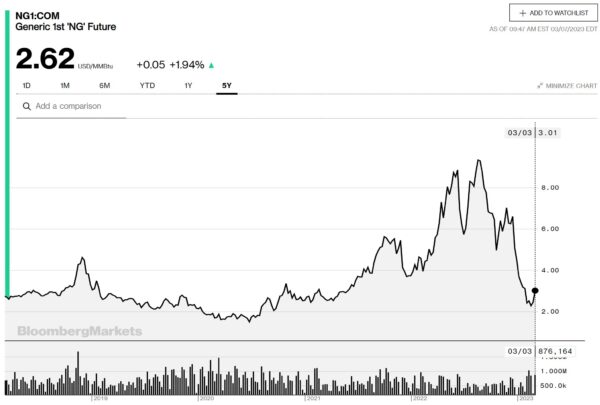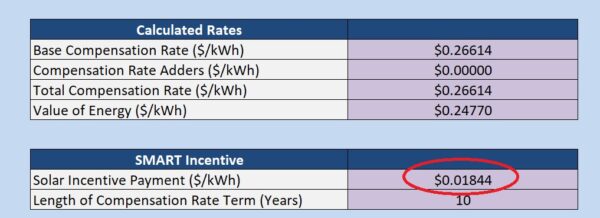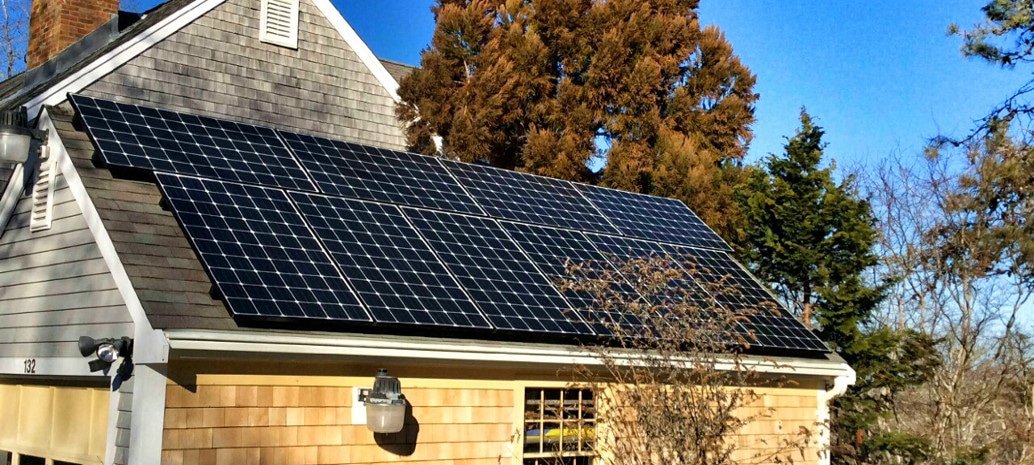As we learned in 2022, the price of natural gas in Germany is a major influence on residential solar power sales in the United States. And due to the unpredictable nature of these prices, solar sales people choosing which escalators to put into their proposals would be wise to consult with history.
There is significant evidence that the war in Europe had been driving residential solar sales in both the United States and Europe. Electricity prices across the United States increased in part due to the war. This was partially enabled by the newly expanding natural gas export market, which has exposed U.S. consumers to more expensive international pricing.

Ohm Analytics shared data with pv magazine USA that shows that some of the states with the highest rates of electricity price increases – Massachusetts and New Hampshire – also had some of the largest growth in solar installations. New Hampshire’s electricity supply rates doubled, and saw a 380% increase in residential solar demand.
For now, the natural gas price increases of several hundred percent have burned out, challenging the salespeople who do the financial modeling of solar proposals with an increasingly volatile new reality.
The U.S. Department of Energy’s Energy Information Administration (EIA) expects that gas usage in the first quarter of 2023 will be the lowest it’s been since 2018, due to warmer weather this winter. This, along with the international gas market calming, has led the EIA to project that the price of wholesale natural gas will fall to roughly half of the average price paid in 2022.

Some electricity generators have started adjusting their pricing. Rhode Island Energy says they may drop the supply side prices of electricity more than 25% for residential customers, along with small and mid-sized commercial customers, starting April 1, 2023. This announcement follows the Massachusetts Public Utility Commission’s approval of winter gas price decreases in early February.
According to U.S. Government data, the average US electricity pricing increased by 14% in 2022.
This whipsaw will affect some solar customers differently. For instance, the pricing changes are affecting how people enroll in the Massachusetts SMART solar program. The SMART program pays out incentives based on a project’s return on investment and the price of electricity. Higher electricity prices produce better returns, and reduce the incentive.

In the Eversource utility region of the south coast of Massachusetts, the incentive is under 2 cents per kilowatt hour, due to the high winter electricity pricing. This somewhat low incentive led some customers to forgo the SMART program and connect without incentives due to fewer hardware requirements and other regional incentives. However, when the price of electricity in Massachusetts drops, and the incentive increases, customers who switched from the SMART program to a pure install will miss out on ten years of increased incentives.
In contrast to dropping electricity prices, there are still a few regions where pricing continues to increase. Florida and California, for example, are both seeking rate increases. Florida is seeking to cover their energy procurement price increases from 2022, while California’s strange winter season drove heavy demand for gas. We should expect to see the rates in these regions fall at some point later this year.
With a variety of market outcomes possible, anyone signing up for solar power right now should take heed of their escalators and starting electricity rates. A number of residential installation companies have been sued for electricity price escalators in their contracts that outpaced the market. For instance, Vivint was sued by the State of New Mexico for a seemingly reasonable 2.9% electricity escalator. That escalator would likely have gone unnoticed if electricity prices had increased through the end of the 2010s, as they had in the prior decade.
Going forward, bullish escalators might still be the right choice, but long term natural gas pricing presents a dilemma. Almost all demand growth for the fuel in the United States has been a direct result of increased natural gas exports. Exports were clearly the reason for price increases in 2022. And after becoming the world’s top exporter of natural gas in 2022, the United States is expected to continue increasing exports of the fuel.
With ongoing warfare, continued global growth in energy demand, and an energy transition underway, the only thing we can expect is change.
This content is protected by copyright and may not be reused. If you want to cooperate with us and would like to reuse some of our content, please contact: editors@pv-magazine.com.








For future reference. the U.S. gets 70% of its petroleum from fracking. Fracking produces both petroleum and natural gas from the same holes in the ground. For the last 13 years, when petroleum prices have stayed high for a while the U.S. experiences a natural gas glut. This is not just low prices. It is also fracking rig operators violating the law and venting natural gas to the air because they don’t want to advertise how much gas they are wasting, but from their perspective, it isn’t worth the cost to bring it to market. The law requires them to flare it, but they don’t want to advertise how much gas is being wasted because it could be seen from space.
You can track this in atmospheric methane levels if you look closely.
The 2022 spike in natural gas prices “reflected” the prices in Europe, but they were not directly related. It is easy to become an amateur commodity trader, and the U.S. is saturated with rich people who don’t understand the markets. U.S. capacity to move gas from North America to Europe was at peak capacity in January of 2022, so there was no possible way to buy natural gas after that point and sell it to Europe.
This should be a textbook example of markets operating on emotions without physical influence, but it probably won’t be.
The spike was just an indication of how much money is floating around the U.S. with nothing good to do. They would have been better off investing in wind and solar generation.